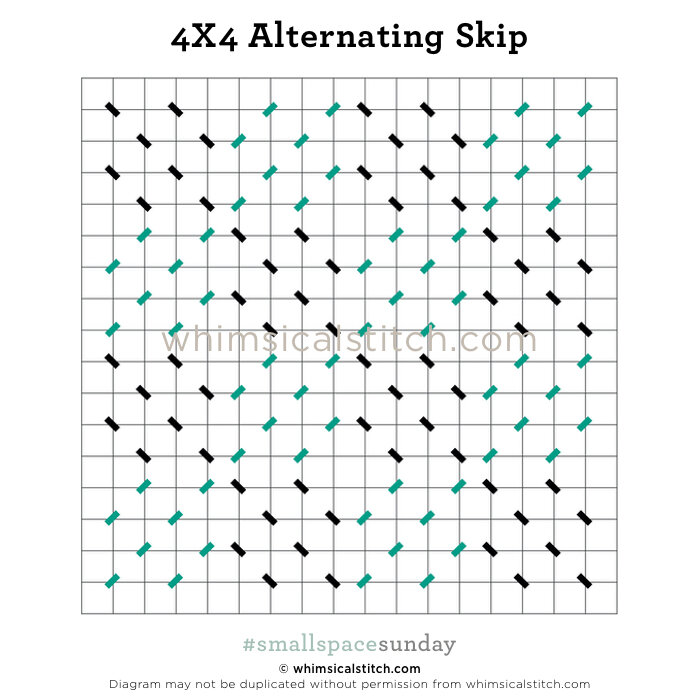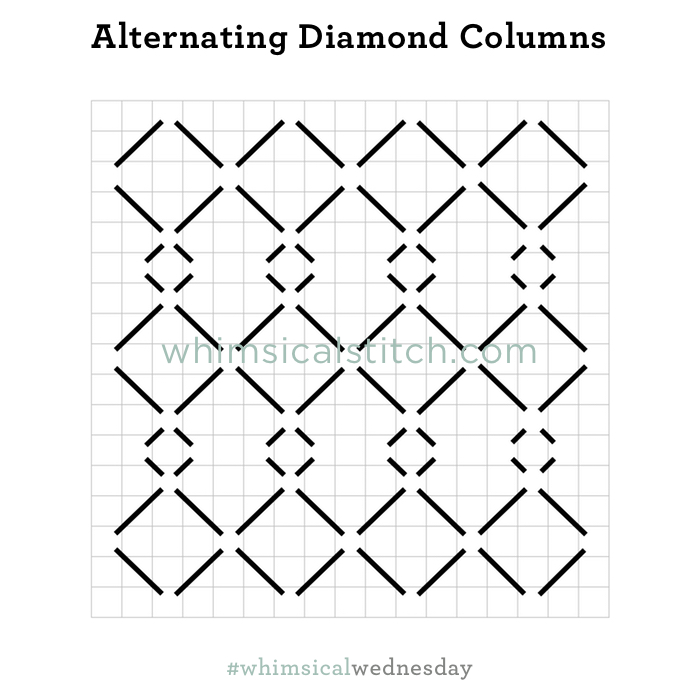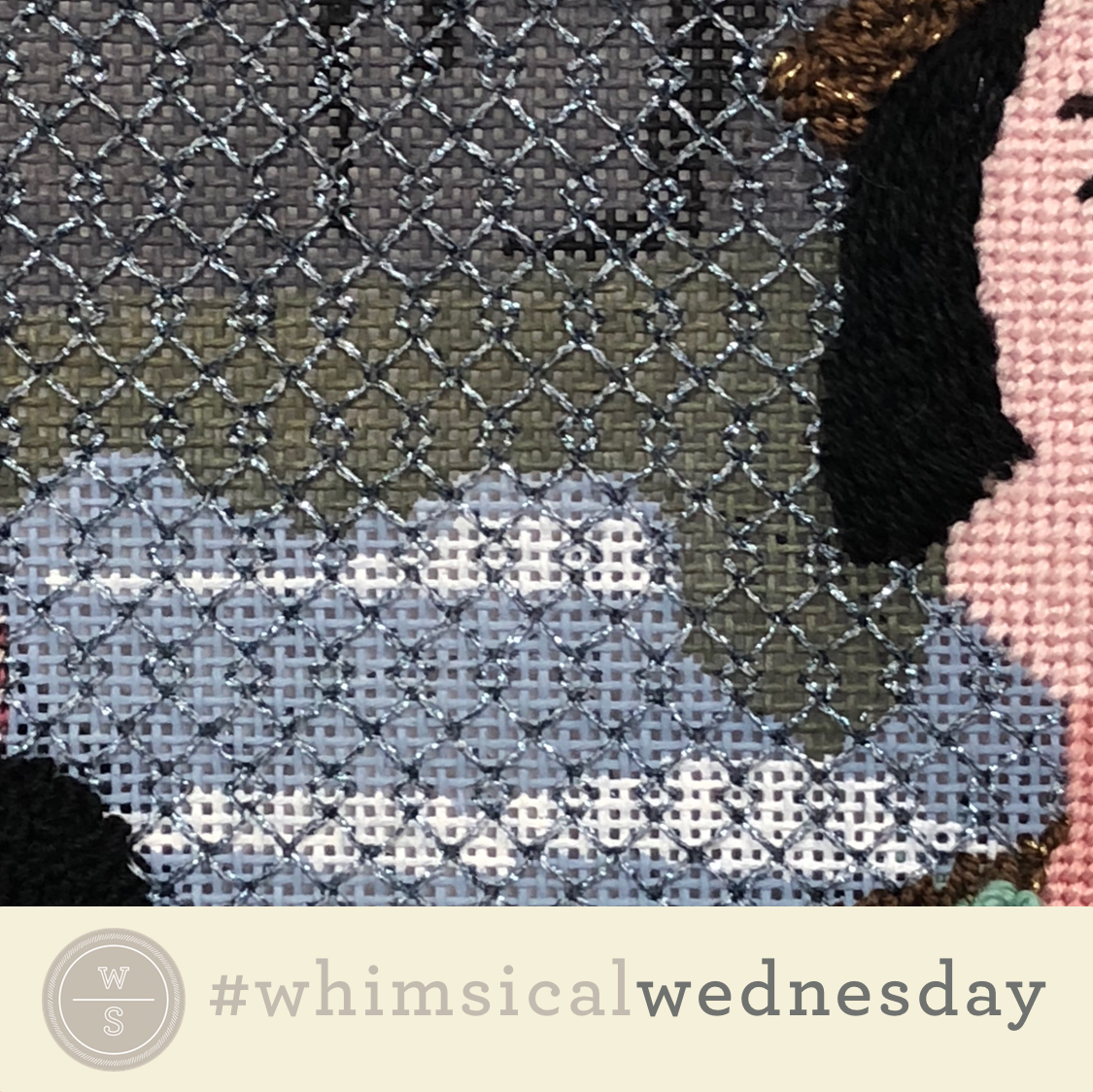I confess I have a formula for windows. Open stitch? Check. Small stitch? Check. Lightweight metallic? Check. Well, two out of three of those “rules" apply to today’s stitch.
Today’s stitch comes from one of my very first Stitch Guides (Lemons by Annie O’Brien Gonzales) and uses Kreinik Fine Braid (size 8) on 13-mesh. I concocted this stitch to fill rather large window panes, all the while staying true to my general approach of open stitches and lightweight metallics for windows.
Sidebar: If you want to kill more time (and hey, why not, it’s not like your boss is looking over your shoulder since you’re working from home), take a trip in the wayback machine to read about my (literal) discovery of open stitches for windows. (It also happens to come with two of my favorite window stitches.)
The path for this stitch is similar to blackwork. I call it a modified back stitch. Simply follow the outline of the pattern using back stitches. A traditional backstitch goes from left to right (or right to left)…repeatedly. With a modified back stitch, you alternate between left to right or right to left or up to down or down to up, depending on the pattern. When you get to an edge of the area, weave your thread through the threads on the back of the canvas to return to an open area and begin again. It’s also helpful to complete some solid stitching in the area so you have other places to bury the threads. In the stitched sample, I buried threads in the shaded window pane (white and light blue) and the green leaves.
This stitch will make a beautiful sky in the far background or water with 2-3 plies of Silk Floss (Soie d’Alger, Soie Cristale, Splendor, Needlepoint Inc Silk, etc) or a lightweight metallic (Kreinik Fine Braid, Kreinik Very Fine Braid, Petite Silk Lame, Bijoux, Soie Perle, etc)
This stitch diagram, along with all other #whimsicalwednesday and #smallspacesunday stitch diagrams, can also be found on a Pinterest board here.
Be sure to follow whimsicalstitch.com on Facebook, Pinterest, Instagram, and Twitter.
If you like what you see on this blog, want to learn some very creative decorative stitches, and how to put them all together, whimsicalstitch.com has a book for you! Mary’s Whimsical Stitches is a contemporary how-to collection of more than 250 stitches for stitchers regardless of skill level. The book includes updated and sequenced diagrams from this blog, all-new stitches, and a chapter on the basics of needlepoint. For more information, visit here.
whimsicalstitch.com also sells Stitch Guides and Stitch Concepts for Melissa Shirley Designs, Zecca Designs, Sandra Gilmore, Purple Palm, Maggie, and Penny MacLeod, and many more. Click here to see the newest guides and click here to see the entire collection.
I hope you have the perfect spot for this stitch! Please enjoy! Have a wonderful #whimsicalwednesday!
A Note about Diagrams
I use color in diagrams to make them as clear as possible. The primary function of different colored lines is to illustrate a stitch sequence. For example, layering of colors demonstrates you add them in that order. They can also provide ideas on how to integrate additional threads (one line for each color). Or, you can use the same thread for all color lines. That's where I encourage you to use your imagination for the space you are stitching!









